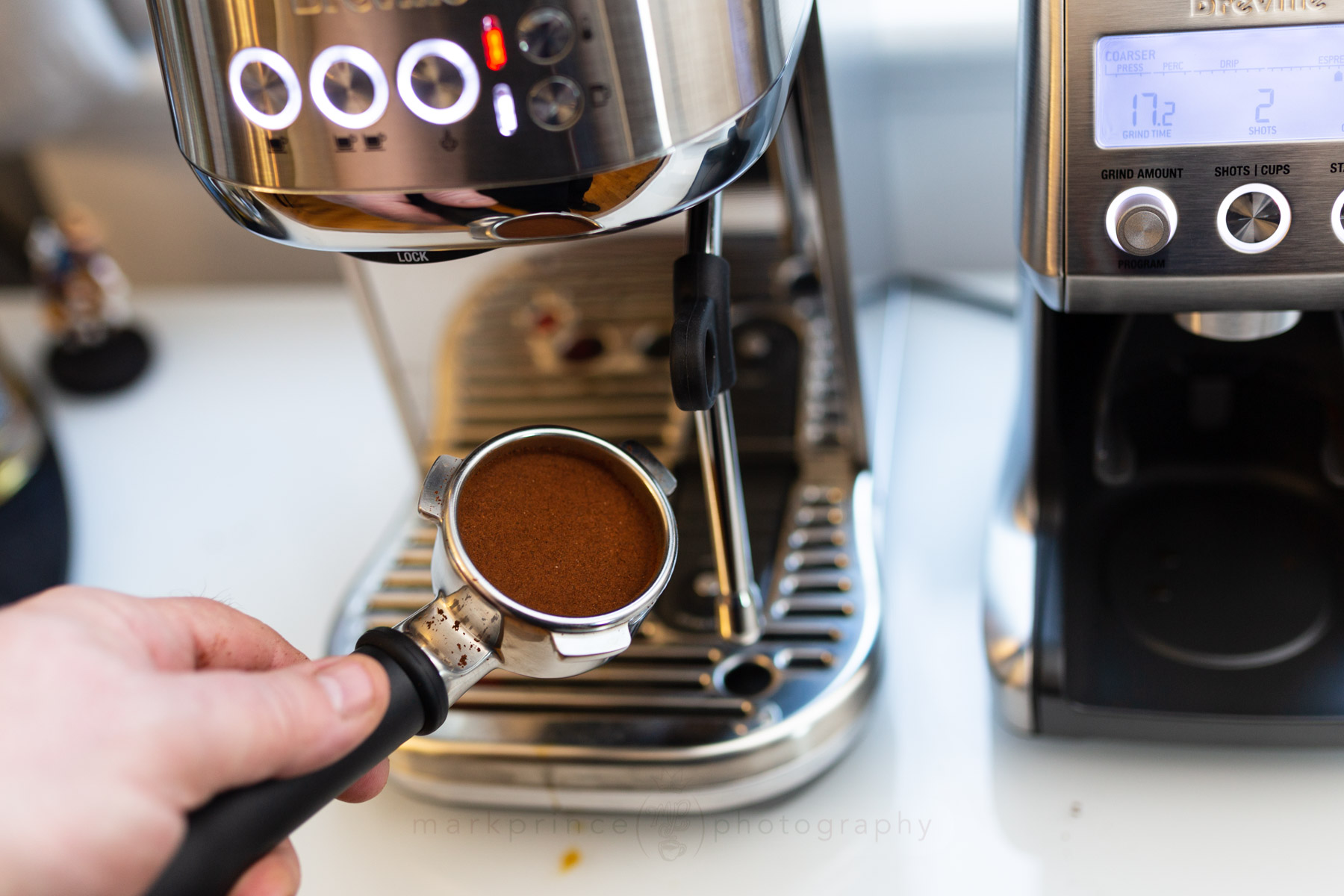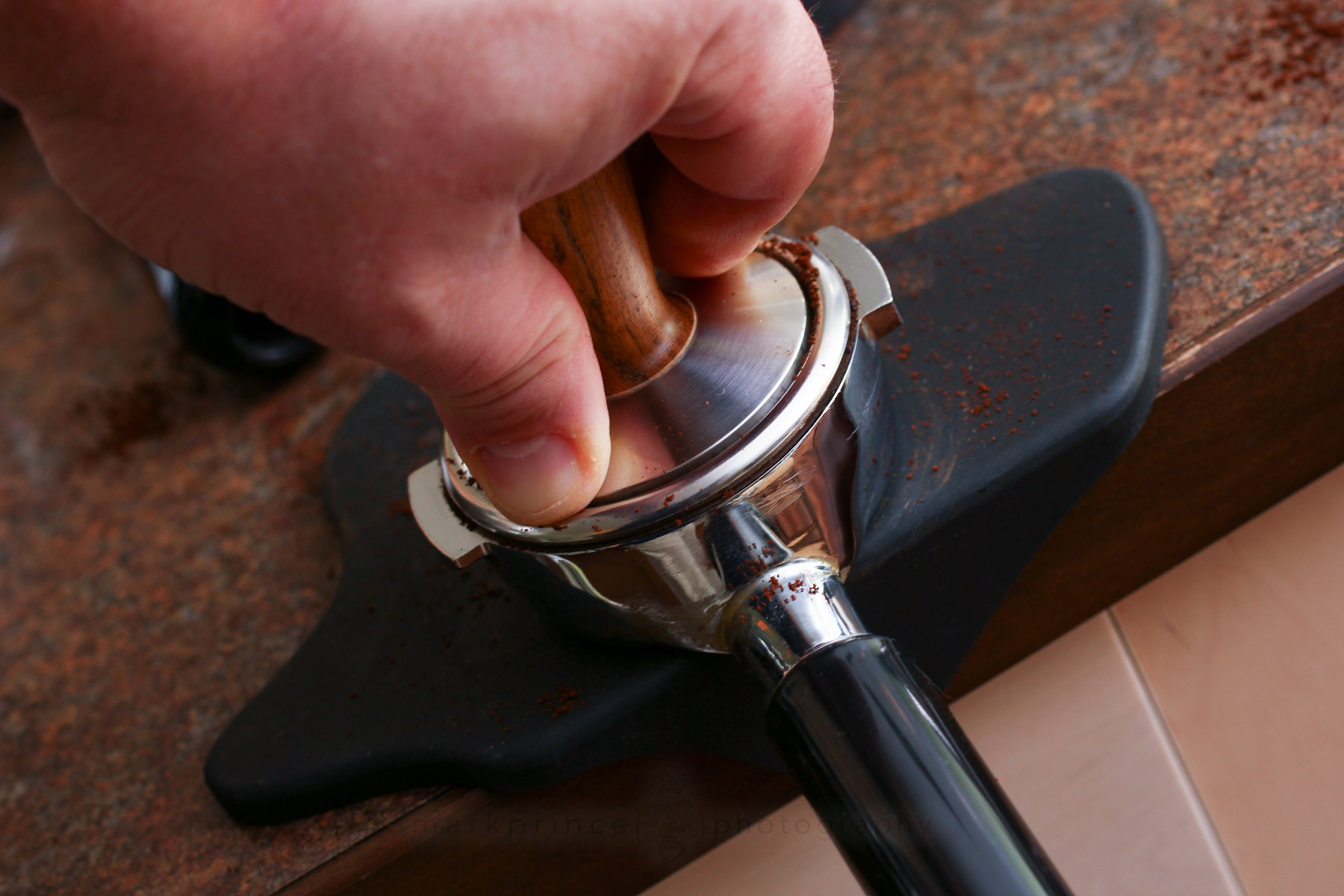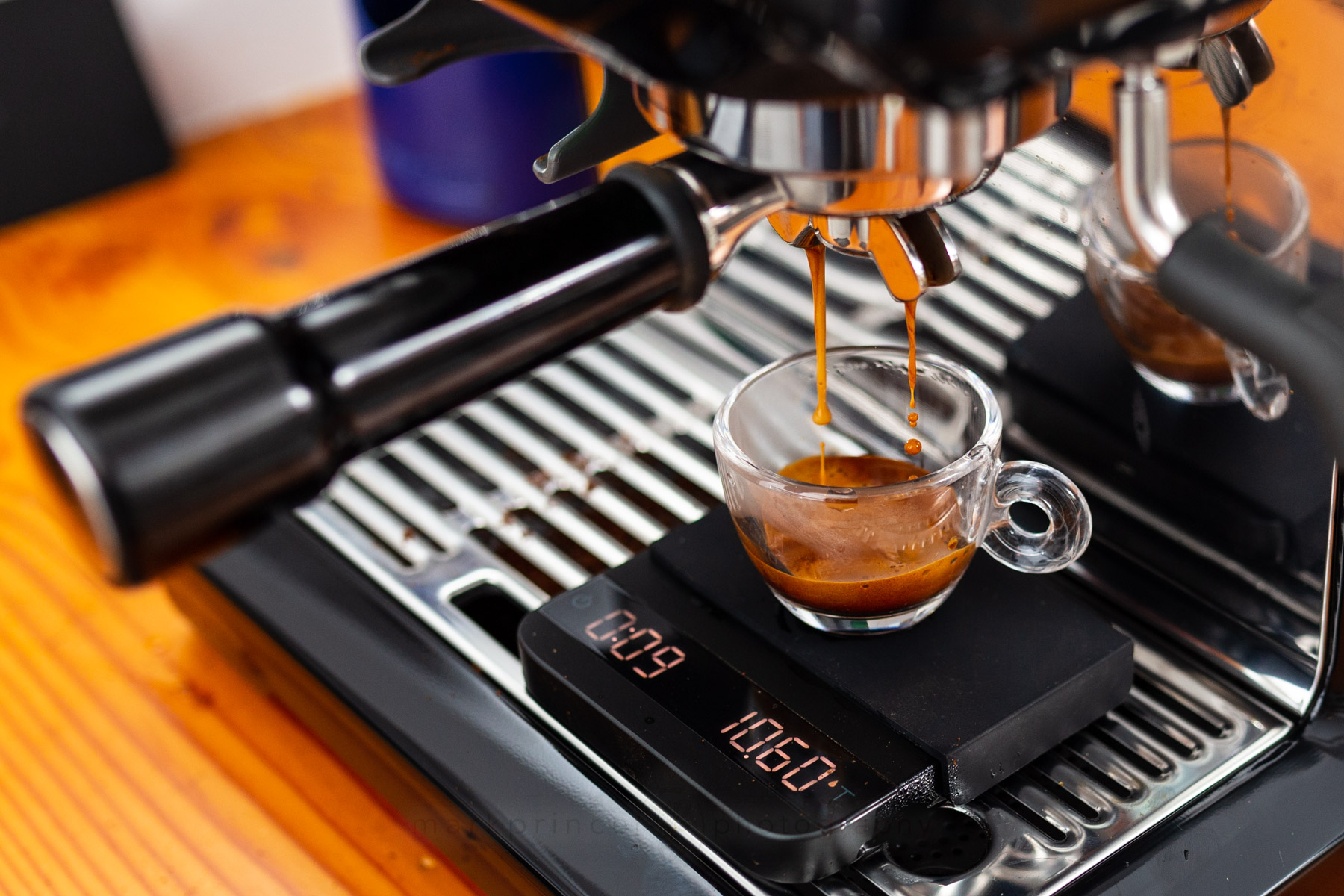Products You May Like
During the pandemic, the entire espresso machine industry saw a massive surge in machine sales, as people moved in droves to get their espresso, latte, and cappuccino fix in the home. We saw a nice uptick in visitors during the pandemic, researching and learning more about the science and art of espresso and how to get the most out of that shiny new machine you bought to act as a doppelganger for the cafe espresso drinks you may have been missing while working at home.
That said, many more new espresso machine owners seem to be having a gazillion number of troubles at home with their new setup. We see it at CoffeeGeek – one of the most common emails we get through our contact form is “why does my home (latte, cappuccino, espresso) suck so much”. And for me it’s even closer to home; in the past 18 months, at least a half dozen friends have hit me up asking me to help improve their espresso game in the home.
The advice I shared from my past experience as a barista took the form of notes, then a kind of standard email reply. Now it’s time to share that with CoffeeGeek readers. This list could easily have 20 mistakes and their explanations, but let’s keep it to the top six, in order of least to most important.
6. BAR (Pressure) Boasts on Machine Boxes
If you still do your buying the old fashioned way – say visiting the local Target, Walmart, Costco, or Best Buy – walking through the espresso machine section hits you up with a lot of glitzy packaging and raves about the various machines’ abilities and parts. Even going through Amazon, for the budget brands of espresso machines, you always see brags about the BAR pressure and other features that don’t matter much.
I get questions like this: “Machine A has a BAR pressure of 18, but machine B is only 15 BAR; so machine A is a better choice, right?”
Here’s the answer: for the most part, BAR pressure is meaningless as a “feature” on most espresso machines, including most budget ones. You never see higher end consumer machines brag about this.
This is because inside all of these machines, the pump’s maximum pressure is regulated by some kind of check valve or over-pressure valve that ends up delivering a (more or less) consistent 9 to 10 BARs of pressure (about 135psi) to the machine’s grouphead. So that 18 BAR machine is still delivering around 9 BAR, just like the 15 BAR machine is.
Bottom line: don’t shop for machines based on how much pressure they offer.
5. Never Cleaning the Machine
This is a super common mistake for many home espresso machine owners: never once giving the machine anything more than the lightest of cleanings. And espresso machines need a very regular cleaning, much more so than auto drip coffee makers.
The reason is a lot of pressure, release of pressure, and very fine grind particles. Espresso machines produce 135psi of pressure when brewing a shot of espresso, and when the shot’s done, many machines have instant pressure relief; both of these actions create a lot of turbulence and backflow through parts of the brewing group. Add the very fine grinds used, and you end up with a lot of gunk throughout the machine.
And don’t get me started on steam wands. (okay, I will just a bit: your steam wand should be completely wiped down and given a blast to clear out the innards, every single time you use it).
How do you clean an espresso machine? I’m told the huge guide on this is coming soon at CoffeeGeek, but for now, here’s some brief instructions.
Every shot you pull should have some minor cleaning involved, and it’s pretty easy to do. Pull your shot, dump the spent coffee puck, and then run a “flush” shot on the machine before re-inserting the cleaned portafilter, to run some water through the machines’ grouphead and dispersion screen (that’s the mesh or perforated screen where the water comes out of the machine into the portafilter). It wouldn’t hurt to also give the dispersion screen a quick wipe down too.

The more detailed cleaning depends on your machine’s capabilities. Look to see if your machine has instant pressure relief as a feature. This means as soon as you finish your shot pull, all the pressure built up in the brewing chamber is instantly released. Most machines over $400 have this feature, but many under $300 do not.
If your machine does have instant pressure release, you can do the same thing pro baristas do on commercial machines: run a backflush cleaning cycle. You just need a blind filter (a filter basket with no holes) or some machines, like higher end Brevilles, come with a backflush rubber disk that is used in their single baskets. How do you backflush? Check out this video.
.
If it’s a budget machine without instant pressure relief, you can still do a deep clean on it: remove the dispersion screen (they are usually just screwed in), give it a serious soak clean, and wipe down the rest of the grouphead area manually before reattaching the dispersion screen.

4. Crappy Water
Espresso is around 95% water. Water you use in the machine. So why wouldn’t you want the absolute best water you can possibly have when building these precious little 45ml beverages?
But that’s what the vast majority of espresso machine owners do: they just fill the machine with standard tap water. You can do better. Some espresso machines (like the Breville Barista Express) include a filter system with the machine (make sure to replace the filter every few months). If your machine doesn’t have a built in filter, pick yourself up a Brita Filter System or better yet, a Zero Water filter pitcher, and use it religiously.
Your espresso quality will see a marked improvement compared to using regular tap water, especially in some cities and regions.
3. Poor Barista Techniques
We touched a bit on this in our How To Make Espresso guide (definitely worth a read), but another area people make mistakes with their espresso machine is on their workflow going from whole bean coffee to pulling the shot. Probably the biggest mistake is poor tamping techniques. Here’s some proper steps in your work flow:
- Grind your coffee just before pulling your shot. Don’t use stale ground.
- Dose your coffee evenly into the portafilter basket. Try “knocking down” the basket midway through adding coffee to it, to further settle the grounds evenly.
- Level the bed of coffee with your finger (or a leveler, like this one).
- Evenly tamp down the coffee with your machine’s tamper or an after market tamper (here’s a nice one for the budget buyer).
- Get the portafilter into the machine as soon as possible and pull the shot.
The second last point above – a level tamp – is where most people make a mistake. But having a level tamp (meaning the bed of coffee is perfectly level on all sides) ensures that all the bed of coffee is impacted with the same pressure and same flow-through rate by the pressurized water. If one side of the puck holds less coffee than the opposite side (because the bed is uneven), the majority of the pressurized, brewing water will flow through the thinnest side, leading to over-extraction from part of the bed of coffee, and under-extraction from the other half. The result is a weak, over-extracted shot of espresso.


2. Bad Coffee
It’s an amazingly sad fact that people will spend $500, $750, even $1,000 or more on a nice espresso machine setup for home, but buy 5 kilo bulk bags of crappy coffee from Costco or Walmart to use in their machines over a 3 month period.
The heart of good espresso isn’t the machine: it’s the coffee. Do not skimp. Don’t buy grocery store coffee. Don’t be afraid to spend $20 a lb on coffee. After all, if you’re using 22g per double shot (which is 16-18g for the shot plus another average 4-8g in wastage), that gives you 44 single shots, and up to 50 if you’re really frugal in your wastage. That means that $20/lb coffee costs you $0.45 per shot of espresso. Not bad when most cafes charge you $2 or more.
Here’s some further tips on getting good coffee:
- It has to have a roasted on date, and that date should be less than 2 weeks ago.
- If it has a “best used by” date on it, pass on it.
- Look for roasters who have accurate tasting notes on all their coffees
- Look for seasonal coffees from quality roasters
- Consider having a subscription service from a roaster (regular delivery + cheaper pricing)
- Avoid 3rd party coffee subscription services (companies that get coffee from various roasters and ship you different coffees each month). Reasons? Way more expensive, coffee is older, and the carbon footprint is much greater than buying direct.
Are you looking for a good coffee roaster with a fantastic subscription service? We like Social Coffee in Canada, and Dancing Goats Coffee in the USA (nb, these are not affiliate links – we just love their coffees and happily recommend them).
… and the Number 1 mistake home espresso machine owners make?
1. Not Having a Grinder (or a Good Grinder)
Just like the things that amaze me regarding bad coffee, it also amazes me that people will spend $1,000 on an espresso machine, but use a budget blade grinder with it, or worse still, get their coffee ground at the cafe or grocery store.
Nothing – and I mean nothing – will improve your home espresso more than a quality grinder. If using good water improves your coffee 50%, and using good beans improves it by 75%, then having a really good coffee grinder (vs buying preground) will probably improve your espresso by well over 100%.
You may have bought a machine that has a grinder built in, and generally that’s a good thing these days. Take the Breville Barista Express, the number one selling espresso machine on the planet for nearly 10 years now: it has a very capable built int grinder. But if your machine is a standalone model, you have to get a good grinder to pair it with.

If good coffee is the heart of good espresso, then a quality grinder is the hidden soul of espresso. Here’s why:
The coffee bean is a wondrous collection of chemicals, gases, fats, lipids, colloids, and inert materials. One of the key elements in the roasted coffee bean is carbon dioxide gas. Produced a plenty in the roasting process, C02 is the reason why fresh roasted, fresh ground coffee smells so great; not because of the smell of C02 itself (it has no discernable smell at low concentrations), but because C02 is the primary transporter of the elements in ground coffee that do produce pleasing aromas. And as one of my favourite roasters used to say, if you’re smelling it in the air, you’re not tasting it in the cup.
C02 not only carries aromas with it, but it also acts as a magnet — an attractant if you will — for elements in the ground coffee that are not otherwise soluble in water. It literally carries these taste and aroma components from the ground coffee to your beverage, where brewing water can’t do the task on its own if no C02 were present. It is also what aids in the production of crema in espresso, and “bloom” in pourover coffee.
When coffee is ground to espresso fineness (roughly 350 micron particle sizes), roughly 80% of the bean’s stored C02 evacuates within 2 minutes, according to Andrea Illy (in his thesis book, The Chemistry of Coffee). That C02 is now in the air, carrying with it microscopic lipids, oils, fats, and colloids that would have contributed to a better tasting cup of coffee.
This is why it is very important to only fresh grind coffee for espresso, and to have that fresh ground locked in place and producing espresso within 60-75 seconds of it being ground. And this, on its own, is the reason why having a grinder on hand for making espresso is of utmost importance.
Espresso is also a very demanding brewing method, operated under very high water pressures at temperatures above 93C. Water will always find the path of least resistance — and even more so when pushed with pressure — so ensuring your grind is even, with the majority of the grinds within your target particle size range, helps water flow evenly through an espresso puck. And you get this from quality grinders with well engineered burr groups. You don’t get a good particle size range from cheap grinders or blade grinders.
I could go on about the importance of the grinder to the espresso brewing method, but the above two major points: having a grinder on hand for fresh ground, and having a quality grinder that produces an even particle size range, are both crucial contributors to good espresso.



